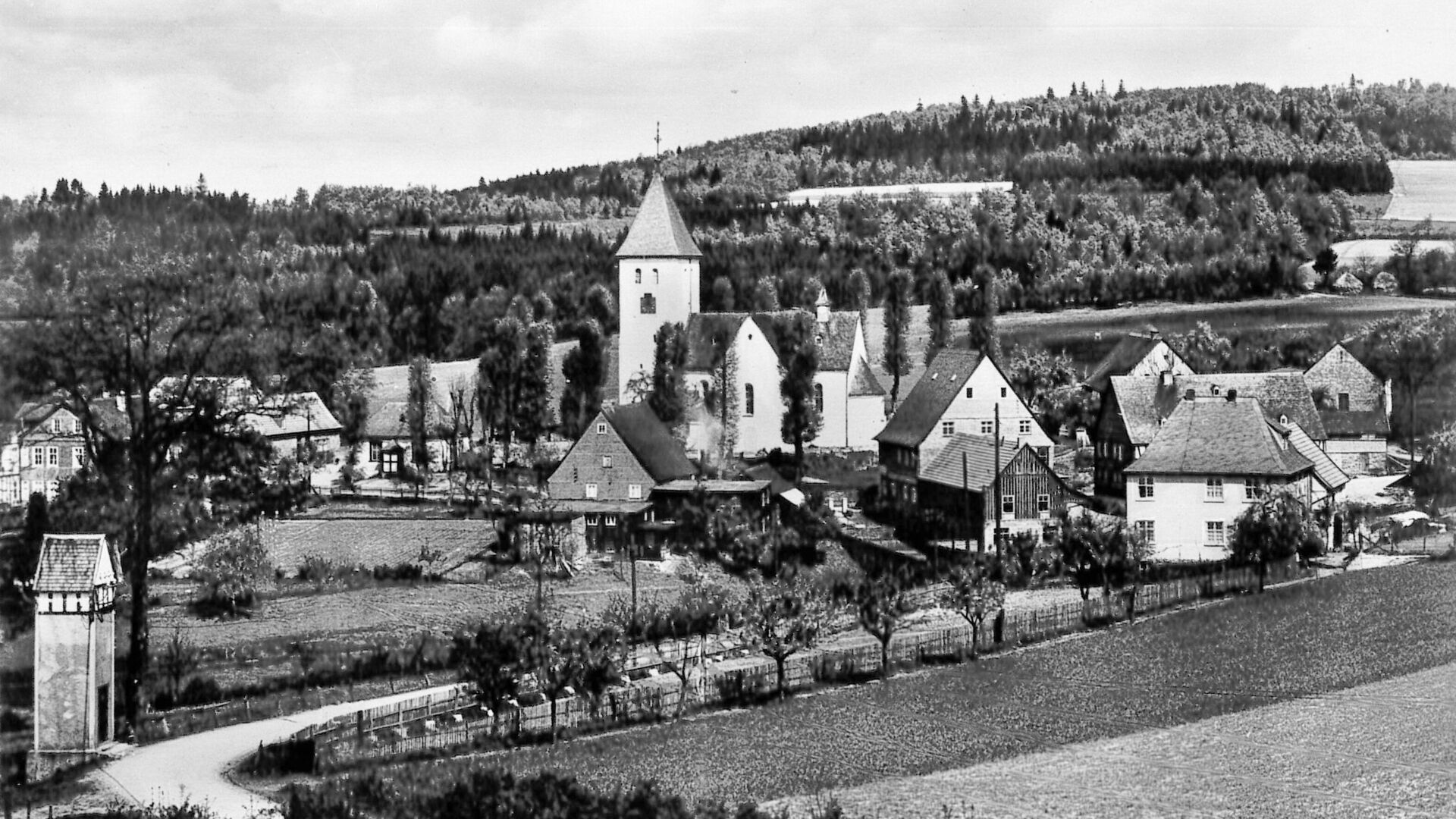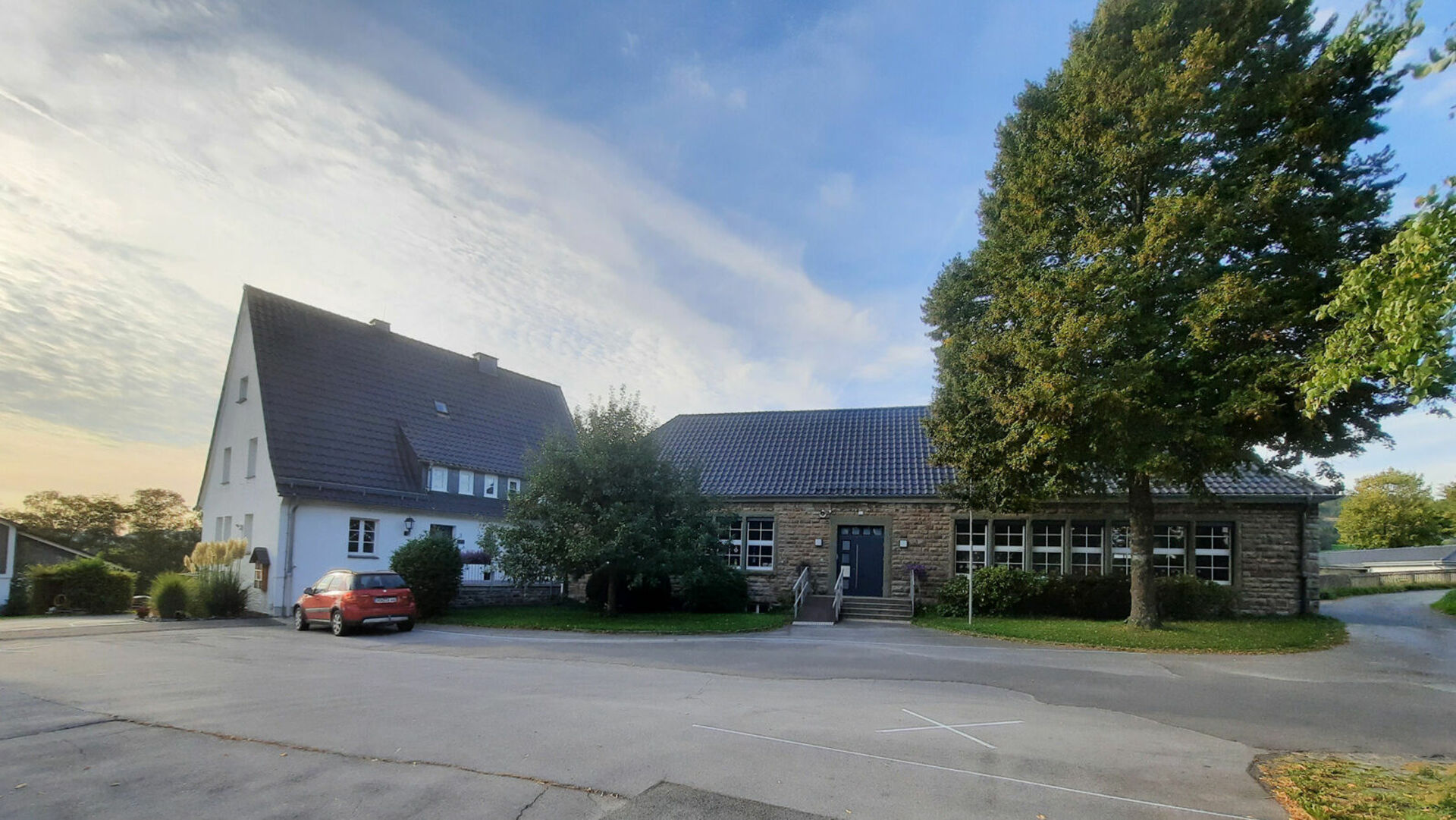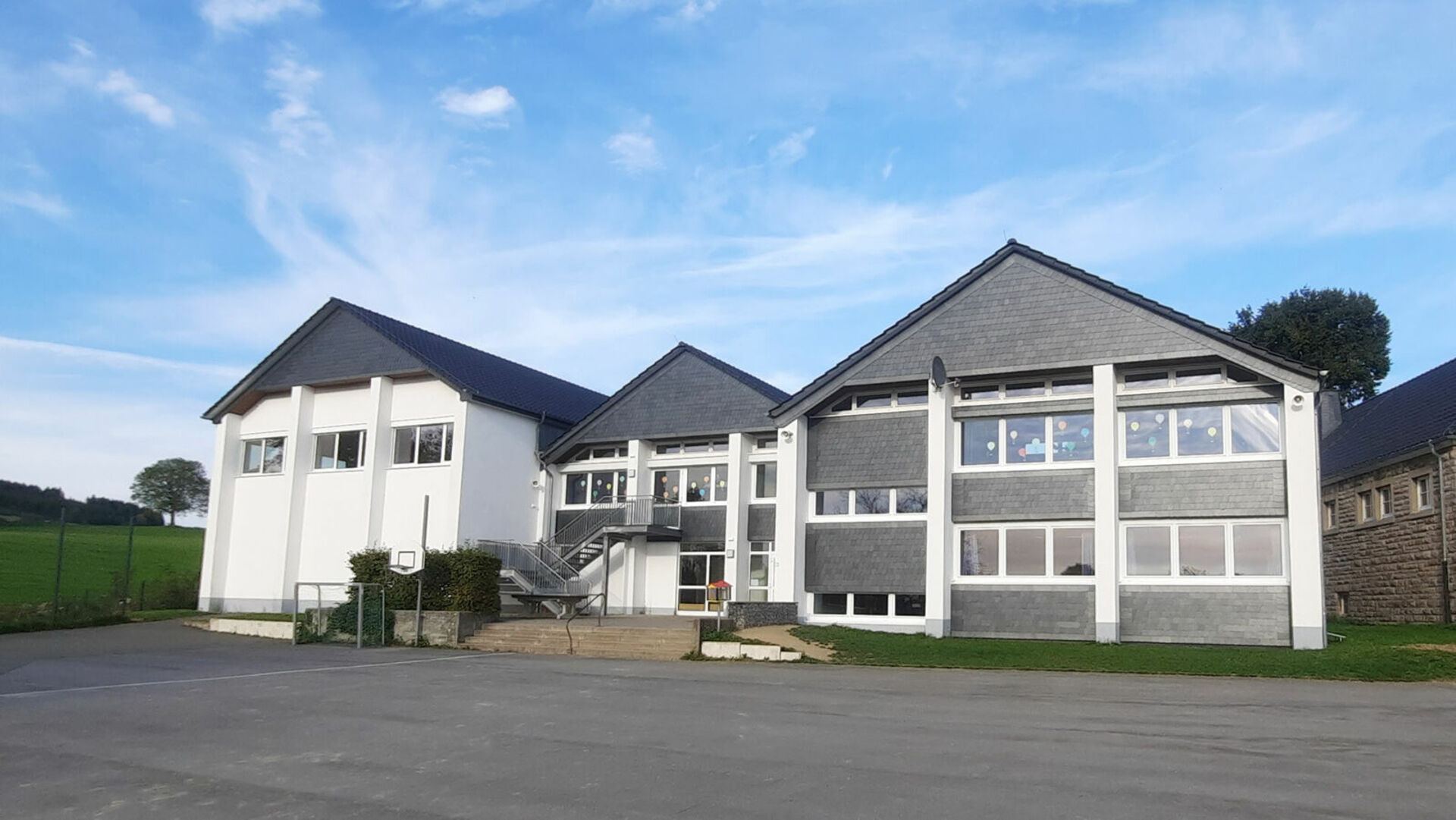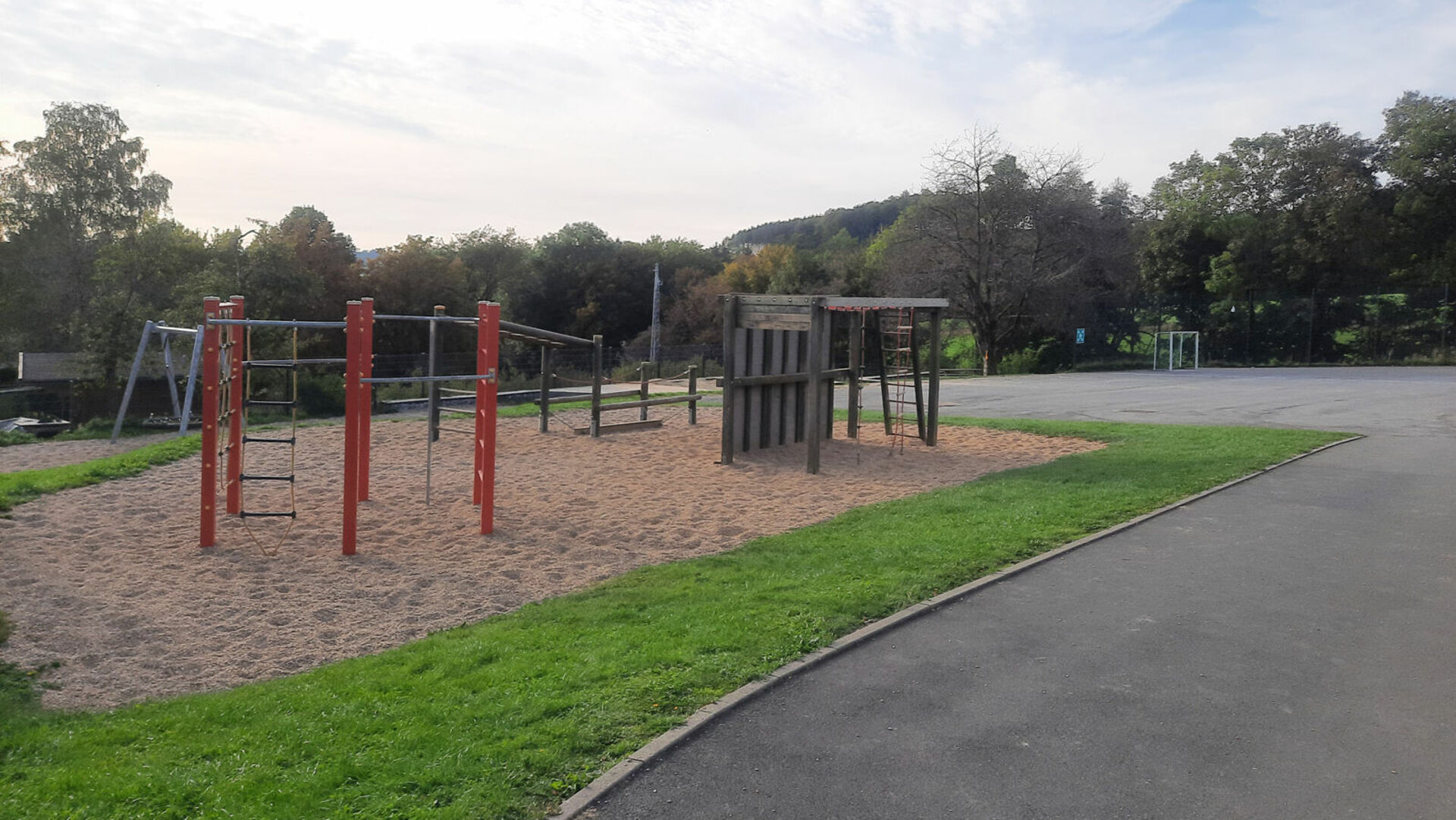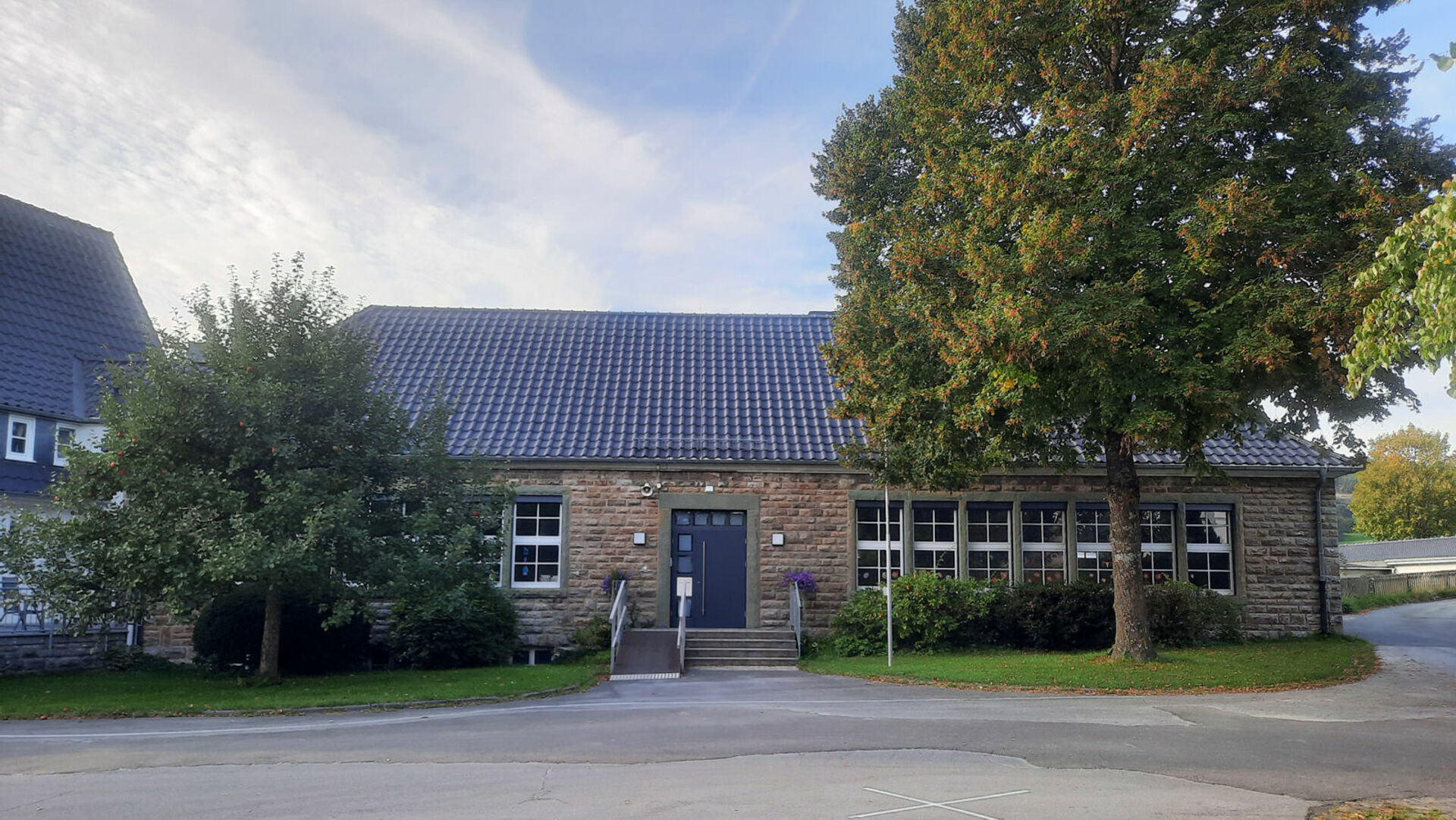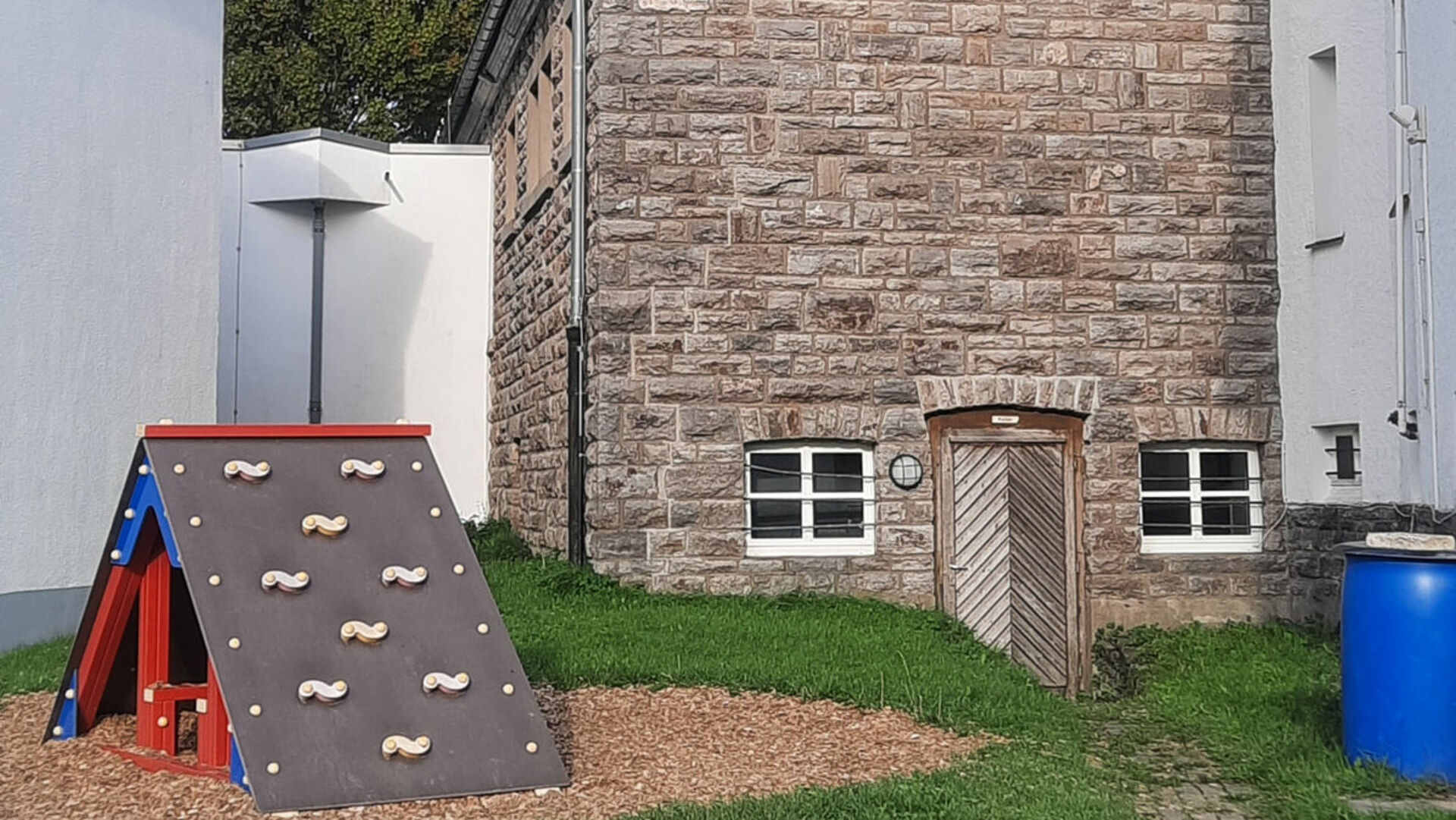Catholic elementary school Berghausen
Between compulsory education and a shortage of teachers
Most people probably come here because of the oldest preserved Romanesque village church in the Sauerland The small sandstone house next to it also has an exciting history. After the war, the rebuilt Catholic elementary school was located here. Girls and boys were taught together, which was typical for village schools. Classes were separated according to grade: from 5th to 8th grade, they went to the classroom for the older children. After that, lessons were over for many due to the end of compulsory schooling. Today, primary school children in grades 1-4 learn here. The school was extended in the early 1970s and now even has a gymnasium.
Ever since Johann Avern had promised to be a faithful schoolmaster in 1616, education in Berghausen rather sluggish. Sometimes the sexton taught, sometimes the vicar. In 1638, the people of Berghausen demanded clarity - but did not want to build a school. The vicar was to remain "eternally silent" and teach in his house. The 30-year war was raging. Meanwhile, a sexton was teaching, who ended up embezzling church property. As a result, the parish began to build a school in 1682, but abandoned it again. It was not until 1707 that Vicar Christan Sasse voluntarily gave lessons in his vicar's apartment. However, without additional payment, the vicar's school was irregular. It was not until 1814 that a teacher was appointed - although schooling had been compulsory since 1799. Things did not improve until 1825, when the parish built a school with a teacher's apartment and garden. After the bombing in 1945, the new school building was erected next to the former crater without hesitation.
The current old building was erected in 1948 directly behind the bomb craters of the previous school. Its walls are made of local sand-lime brick, popularly known as "Arper marble". As before, the school was directly adjacent to the teacher's house. The main entrance is located off-center in the front long side of the building, as the classrooms on the left and right are different sizes. The 61.20 m2 room on the left was intended for the "lower class" and has 6 windows on the entrance side, while the 69 m2 room on the right for the "upper class" has 7 windows. Both rooms were intended for 72 pupils. After the entrance corridor, you come into an anteroom, from which the entrances to the toilet rooms, storage and cellar are on the left and right, as well as the two classrooms on the left and right. Today, the renovated old building is integrated into the new building from 1972, which was extended again in 2017.
For some, school is a second home - for others it's a chore. Enthusiasm at the Catholic elementary school Berghausen was changeable. The vicars and sextons who taught often saw their vocation elsewhere: in the 18th century, for example, sexton Satorius preferred to be a wood and altar carver on the side.
It was only with the Prussian education that Anton Elsleben came to Prussia as a salaried teacher in 1819. Berghausen. His brother August later became the second teacher and was also committed to the development of agriculture and nutrition. 54 boys and 32 girls attended the school in 1823. At that time, it was discovered that two thirds of the girls were not sent to school despite being compulsory.
A photo from 1934 shows 33 children with their teacher Fritz Berghof. Berghof was still teaching after the Second World War. Johannes Greve, a pupil at the time, remembers martial rites and corporal punishment. Fortunately, that is now history.
LERE, LAISTE, SPARE WUAT, THEN YOU CAN; KRISTE; HIÄSTE WUAT
Vertelleken
Chatting out of the sewing box...
Johannes Grewe started school in 1952. He attended lessons from Monday to Saturday, preceded by a 7:15 a.m. service in the church. The school day itself began with a prayer and the question: "Who hasn't been to church?" The pastor also gave religious instruction.
There were also beatings and punishments. Writing was better than the beatings. The saying: "Because my little mouth was not quiet, I have to swallow this pill, write according to the teacher's will", was written up to 100 times by the children, sometimes even in stock. The better ones used them for bartering.
Grewe remembers a math problem: "The pot has circumference x, the lid has circumference y. How far does the lid protrude? How far does the lid protrude?" When his friend's result is correct and his own is not, Johannes goes to the teacher. He is correct after all - and something else comes to light: the teacher can't do the math. His helpless comment: "You're both right".


